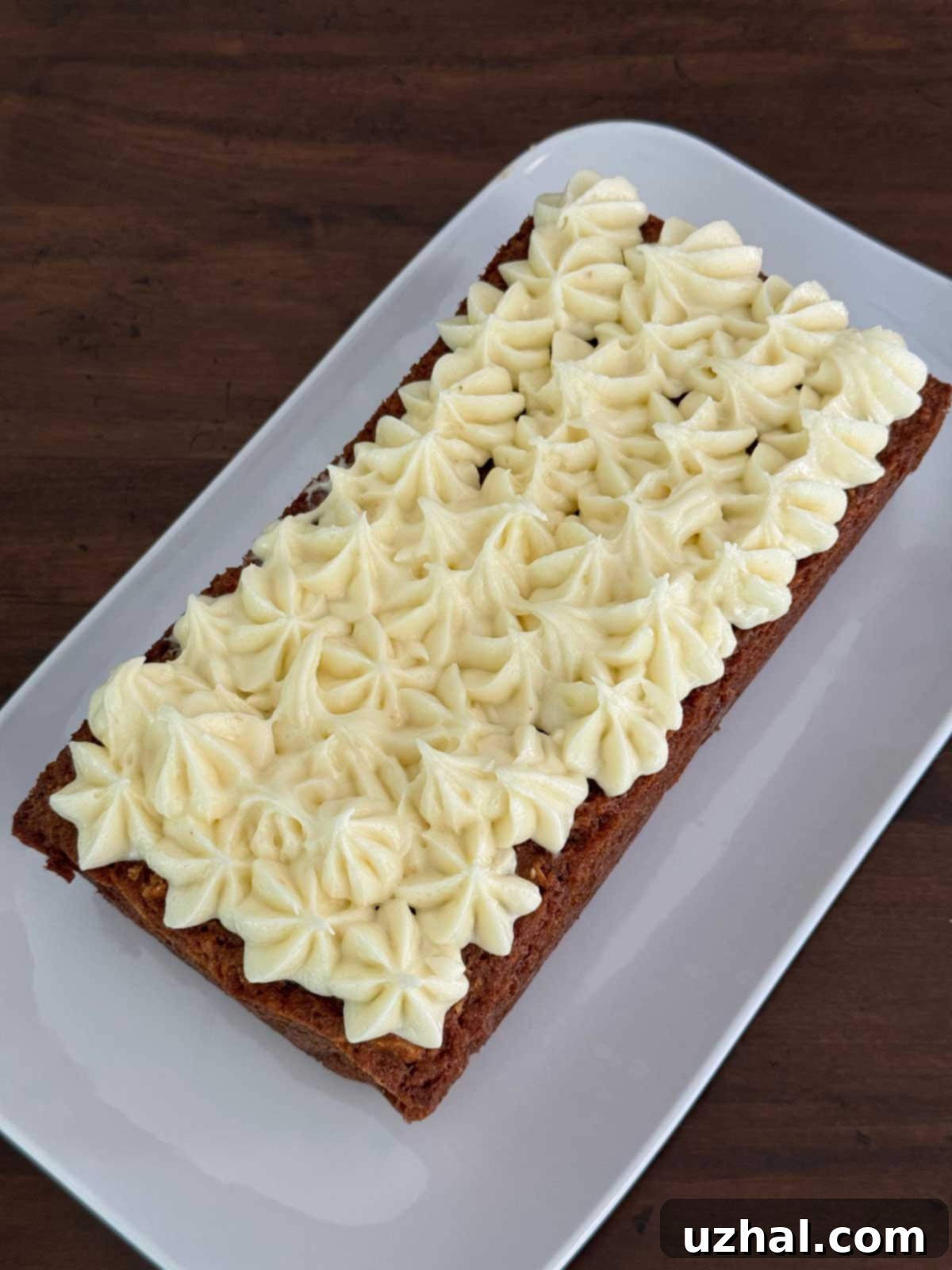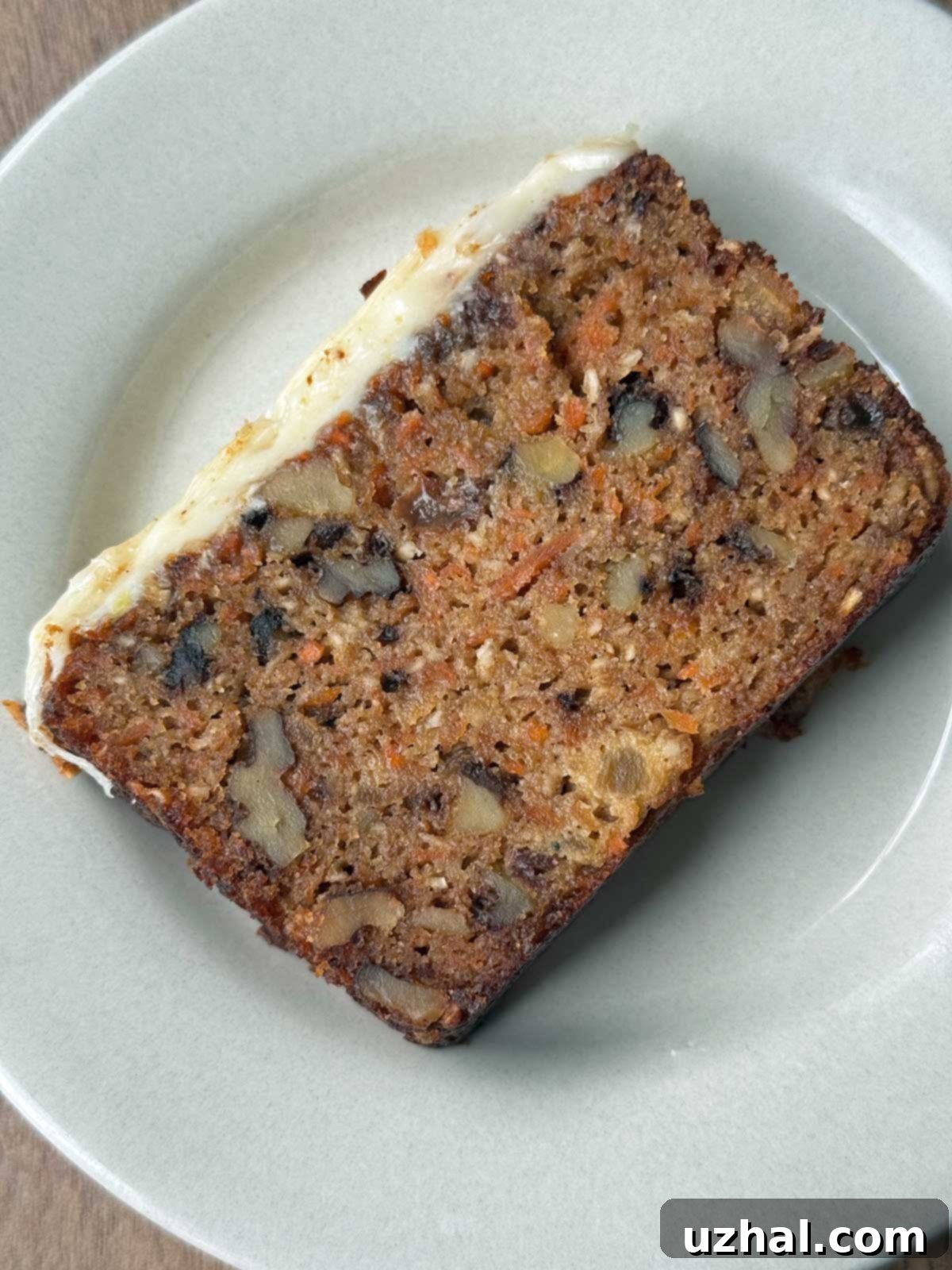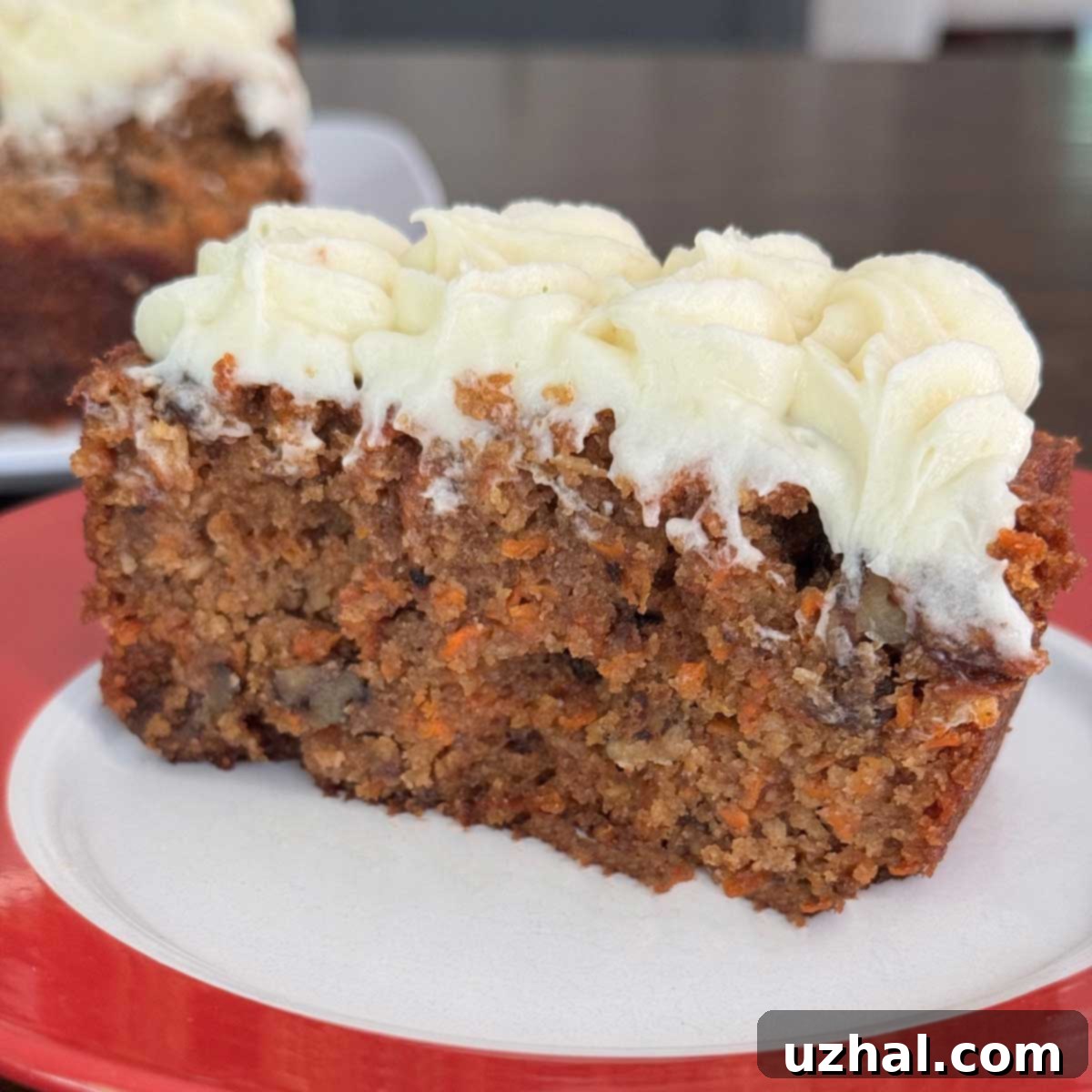Delicious & Gluten-Free Almond Flour Carrot Cake with Cream Cheese Frosting: Your Ultimate Guide
There’s something truly special about carrot cake – a delightful paradox that balances virtuous ingredients like carrots and nuts with the indulgent satisfaction of a rich dessert. When crafted with almond flour, this classic treat transcends its traditional boundaries, offering a naturally gluten-free alternative that’s equally, if not more, moist, flavorful, and utterly satisfying. The inherent nuttiness of almond flour perfectly complements the sweet carrots, juicy raisins, warm spices, and the optional tropical hint of pineapple and coconut. This particular recipe embraces the wholesome goodness of almond flour, making it an excellent choice for those seeking gluten-free options without compromising on taste or texture. Even with its “healthier” foundation, especially when topped with a generous, tangy layer of cream cheese frosting, this almond flour carrot cake truly feels like a luxurious dessert, perfect for any occasion.

Why Choose Almond Flour for Your Gluten-Free Carrot Cake?
Almond flour is an exceptional choice for baking, especially for a dense, moist cake like carrot cake. Unlike wheat flour, almond flour is naturally gluten-free, making this recipe accessible to individuals with gluten sensitivities or those following a gluten-free diet. Beyond its dietary benefits, almond flour imparts a wonderfully rich, buttery flavor and a tender crumb that is often hard to achieve with traditional flours. Its high fat content contributes to an incredibly moist cake, which means you can often reduce the amount of added oil in your recipe, as we do in this one. This not only lightens the cake but also allows the natural flavors of the carrots and warm spices to shine through even more. The fine texture of blanched almond flour ensures a smooth, uniform crumb, preventing the dense, sometimes heavy texture that can occur with other gluten-free alternatives. It’s a fantastic ingredient that enhances the overall experience of a classic carrot cake, delivering a deliciously moist and tender result every time. For anyone looking for a healthier carrot cake option, almond flour is the ideal base.
The Perfect Cake Size: From Loaf to Six-Inch Layer Cake
Many almond flour carrot cake recipes yield large, elaborate creations, but sometimes you just crave a smaller, more manageable cake. This recipe is specifically designed to fit an 8 ½ by 4 ½ inch loaf pan, producing a beautiful, rectangular carrot loaf cake that’s perfect for a smaller gathering or a delightful weeknight treat. Don’t worry about it rising too high; it’s intended to bake up flat in the loaf pan, making it easy to frost. This compact size also makes it simpler to store and less intimidating to bake for those new to gluten-free baking. The loaf shape offers convenience for slicing and serving, ideal for a casual dessert. If you prefer a classic round cake, this versatile recipe can also be baked in two 6-inch cake pans, yielding a lovely two-layer almond flour carrot cake perfect for birthdays, anniversaries, or special occasions. For an even more intimate dessert or a charming individual serving, consider halving the recipe to create a single-layer 6-inch cake. This flexibility in pan size ensures you can enjoy a fresh, homemade almond flour carrot cake in the perfect portion for your needs, minimizing waste and maximizing enjoyment of this moist carrot cake.
The Magic of a Flour Blend: Almond, Coconut, and Cornstarch for Optimal Texture
Baking with almond flour can sometimes be a unique challenge, as it behaves differently from wheat flour. One common issue is that almond flour, while providing excellent moisture and richness, can sometimes lead to a slightly “steamed” or overly wet texture if not properly balanced. This is where a strategic combination of flours truly makes a difference in our gluten-free carrot cake recipe. In this preparation, we combine fine blanched almond flour with a touch of coconut flour and cornstarch. Coconut flour is exceptionally absorbent, much more so than almond flour. Adding just a tablespoon helps to soak up excess moisture, which is particularly important given the high water content of fresh carrots, preventing the cake from becoming soggy. This ensures a lighter, more desirable crumb and a moist carrot cake without the unwanted denseness. Furthermore, a small amount of cornstarch acts as a binding agent and thickener, contributing to a stable and tender cake structure. It helps to prevent the cake from being too crumbly, a common issue with some gluten-free recipes, and adds a certain “spring” to the texture, mimicking some of the properties of gluten found in traditional flours. While it might seem like a small addition – just one tablespoon of coconut flour and one teaspoon of cornstarch – their collective impact on the final texture and consistency of this almond flour carrot cake is profound, ensuring a perfect, non-soggy, and utterly delicious outcome. This blend is key to achieving the best possible texture for your homemade carrot cake.
Essential Ingredient Notes for the Best Almond Flour Carrot Cake
Achieving the perfect moist almond flour carrot cake involves understanding how certain ingredients contribute to its overall flavor and texture. Traditional carrot cakes often rely on a generous amount of oil for moisture, but thanks to the natural fats in almond flour, you can significantly reduce the oil content without sacrificing moistness. I’ve experimented with various oils and found that melted coconut oil works exceptionally well, lending a subtle tropical note that beautifully complements the carrots and spices. However, other neutral-flavored oils like avocado oil or light olive oil can also be used if coconut oil isn’t preferred. When it comes to sweeteners, this recipe offers welcome flexibility for your dietary preferences. While I often use light brown sugar for its rich, caramelized flavor, friends have raved about versions made with coconut sugar, which offers a similar depth of flavor with a slightly lower glycemic index. Feel free to use your preferred granular sweetener, adjusting the amount to your taste; powdered allulose is another excellent option for a low-carb carrot cake. Maple syrup, while optional, adds another layer of complex sweetness and moisture; if omitted, you might consider adding a touch more sugar or a splash of milk to maintain moisture balance. Don’t forget the classic carrot cake spices – cinnamon, allspice, and nutmeg are critical for that signature warm, inviting aroma and taste, providing a wonderful depth of flavor. Using freshly grated carrots is also key; drain them thoroughly on paper towels to remove excess moisture and prevent a watery batter, ensuring a perfectly balanced and moist cake every time.

Classic Add-Ins: Raisins, Nuts, Coconut, and Pineapple for Enhanced Flavor and Texture
What truly elevates a good almond flour carrot cake to a great one are the thoughtful additions that contribute to its diverse textures and burst of flavors. This recipe incorporates several classic add-ins that create a delightful sensory experience, making each bite an adventure. My friend, who tested this cake, even noted that the combination reminded him a little of fruitcake – a testament to the richness and variety of ingredients! However, it distinctly retains its characteristic carrot cake crumb and flavor profile. I’ve experimented with and without crushed pineapple and found it delicious both ways. Pineapple adds a wonderful tangy sweetness and extra moisture, which can be delightful, but if you choose to include it, ensure it’s very well drained and pressed dry to avoid making the cake too wet or dense. Lately, I’ve opted to leave it out for a slightly simpler flavor profile that lets the spices shine, but its inclusion is entirely up to your personal preference. Raisins, in my opinion, are almost indispensable; they provide a chewy texture and concentrated pockets of sweetness that add significant dimension to each bite of this homemade carrot cake. To plump them up, soak them in water or pineapple juice before draining. If you’re not a fan of raisins, currants are an excellent substitute, or you could try other dried fruits like chopped dates or dried cranberries. Coarsely chopped walnuts add a delightful crunch and earthy flavor, providing a textural contrast to the soft cake. You can also use pecans for a different nutty flavor. Unsweetened coconut flakes contribute another layer of texture and a subtle tropical aroma that pairs beautifully with the other ingredients. Feel free to adjust the quantities or types of nuts and dried fruits to suit your personal taste, but these classic additions truly complete the almond flour carrot cake experience, making it a truly unforgettable dessert.
The Irresistible Cream Cheese Frosting: The Perfect Topping
No carrot cake, especially a delectable almond flour carrot cake, is truly complete without a luscious layer of cream cheese frosting. It’s the quintessential topping, providing a tangy counterpoint to the sweet, spiced cake, and adding an unparalleled richness and creamy texture that melts in your mouth. This recipe utilizes a basic, yet incredibly reliable, cream cheese frosting formula that always delivers a smooth, delightful result. It starts with softened cream cheese and butter, which are beaten together until perfectly smooth and creamy, ensuring no lumps. Then, powdered sugar is gradually incorporated, beating until you reach your desired sweetness and fluffy consistency. A dash of pure vanilla extract is essential for depth of flavor, and a tiny pinch of salt can really enhance all the other flavors, balancing the sweetness and preventing it from being cloyingly sweet. I’ve successfully made this frosting using both regular (full-fat) and light cream cheese, and amazingly, both yield fantastic results, offering a slightly less indulgent option if desired without compromising on flavor or texture. For those looking to reduce sugar intake, I’ve also had great success using powdered allulose sugar, which provides sweetness without the calories or blood sugar impact of traditional sugar, yet still whips up into a smooth, pipeable frosting that’s perfect for a low-carb carrot cake. It’s hard to go wrong with this particular frosting; it’s robust enough to hold its shape for piping and spreads beautifully. Of course, if you prefer a less sweet dessert or are aiming for an even healthier profile, the cake is still wonderfully delicious on its own, and you can certainly opt to leave the frosting off entirely, letting the cake’s natural flavors shine.
Baking Tips for a Perfect Gluten-Free Almond Flour Carrot Cake
To ensure your almond flour carrot cake turns out perfectly every single time, here are a few expert baking tips that will guide you to success. First and foremost, accurate measurement of your ingredients, especially the flours, is absolutely crucial for gluten-free baking. Using a kitchen scale to measure by weight (as indicated in the recipe for key ingredients) will give you the most consistent and reliable results, preventing common issues like a dry or overly wet cake. When preparing your baking pan, whether it’s a loaf pan or round cake pans, always grease it thoroughly and line the bottom with a strip of parchment paper. This simple step creates a non-stick surface, prevents sticking, and makes it much easier to remove your delicate cake once it’s baked and cooled, ensuring a clean release. Remember to drain your grated carrots very well before adding them to the batter; excess moisture is the enemy of a tender crumb and can lead to a dense, soggy cake. A few layers of paper towels work wonders here to absorb any extra liquid. When mixing the batter, combine the dry ingredients first, sifting them together to ensure even distribution of leavening agents and spices. Then, gradually add the wet ingredients. Once the flour mixture is incorporated, avoid overmixing. Overmixing can develop any inherent gumminess in gluten-free flours and lead to a tougher, chewier texture. Gently fold in your carrots and other add-ins until they are just combined, being careful not to overwork the batter. During baking, keep a close eye on your cake; almond flour cakes can brown more quickly than traditional cakes due to their higher fat content. The baking times provided are estimates, so always test for doneness by inserting a wooden pick or skewer into the center – it should come out clean with no wet batter clinging to it. Finally, and this is critical for a beautiful finish, allow your cake to cool completely in the pan on a wire rack before attempting to frost it. A warm cake will melt your beautiful cream cheese frosting, resulting in a sticky mess rather than a perfectly frosted masterpiece. Following these simple, yet essential, tips will help you achieve a consistently moist, flavorful, and beautifully textured almond flour carrot cake every single time.
Storage and Serving Suggestions for Your Almond Flour Carrot Cake
Once you’ve baked and frosted your exquisite almond flour carrot cake, proper storage is key to maintaining its freshness and delicious flavor for as long as possible. Because this cake is typically topped with a cream cheese frosting, which contains dairy, it is best stored in an airtight container in the refrigerator. This will keep the frosting firm, prevent it from spoiling, and most importantly, keep the cake itself wonderfully moist and prevent it from drying out. When stored correctly in the refrigerator, your gluten-free almond flour carrot cake will remain wonderfully moist and flavorful for up to 3 to 4 days. If you’ve baked a larger cake or simply want to extend its life even further, you can also freeze individual slices or the entire cake (unfrosted is generally best for freezing, but frosted works too if it’s well-wrapped). To freeze, wrap individual slices or the whole cake tightly in plastic wrap, then an additional layer of aluminum foil, and place them in a freezer-safe bag or container. It can be frozen for up to 2 to 3 months without significant loss of quality. Thaw frozen cake overnight in the refrigerator before serving. For the best flavor and texture, allow the refrigerated cake to come to room temperature for about 30 to 60 minutes before serving. This softens the cream cheese frosting to its ideal creamy consistency and enhances the cake’s moistness and allows the warm spice flavors to fully bloom. A slice of this delightful gluten-free almond flour carrot cake pairs perfectly with a freshly brewed cup of coffee or a comforting mug of tea, making it an ideal treat for breakfast, brunch, an afternoon pick-me-up, or a satisfying dessert after any meal. Enjoy every guilt-free and delicious bite of this amazing healthy carrot cake!
- Chocolate Carrot Brownies
- Best Carrot Cupcakes
- Pumpkin Carrot Cake
- Carrot Cake Cookie Taste Test
- Two Layer Carrot Cake
.
Recipe

Almond Flour Carrot Cake
Anna
Pin Recipe
Ingredients
CAKE:
- 1 ½ cups fine blanched almond flour (150 grams)
- 1 tablespoon coconut flour (7 grams)
- 1 teaspoon cornstarch (3 grams)
- ¾ teaspoon baking soda
- ¼ teaspoon baking powder
- ¼ teaspoon salt
- ¾ teaspoon ground cinnamon
- ½ teaspoon allspice
- ¼ teaspoon nutmeg
- 2 large eggs
- ½ cup lightly brown sugar or coconut sugar (I use the weight of 100 grams)
- 1 ½ tablespoons maple syrup (30 grams)
- ¼ cup oil (melted coconut oil) (45 grams)
- 2 teaspoons vanilla extract
- 1 ½ cups grated carrot, drain on paper towel (150 grams)
- ⅓ cup unsweetened coconut flakes (35 grams)
- ⅔ cup coarsely chopped walnuts
- ½ cup raisins, soaked in water or pineapple juice and drained
- ½ cup crushed pineapple, very well drained and pressed dry (optional)
Frosting
- 4 ounces cream cheese, softened (regular or light)
- 2 ounce butter, softened
- ½ teaspoon vanilla extract
- 1 ½ to cups powdered sugar
- 1 pinch salt, but can omit if you use salted butter
Instructions
-
Preheat oven to 325°F. Grease an 8 ½ by 4 ½ inch loaf pan and line with a strip of parchment. For a 6-inch cake, use two 6-inch round cake pans.
-
Mix the almond flour, coconut flour, cornstarch, baking soda, baking powder, salt and spices together and set aside.
-
In a mixing bowl, using a scraper or a whisk, mix the eggs until blended, then beat in the sugar, maple syrup, oil and vanilla. Add the flour mixture and stir until blended, then stir in the carrots, walnuts, raisins, coconut and pineapple (if using).
-
Spread batter in the pan and bake at 325°F for about 55-60 minutes (40 minutes if using 6-inch rounds) or until a wooden pick inserted in center comes out clean. Let cool, then frost with cream cheese frosting.
Cream Cheese Frosting
-
Make the frosting. Beat the cream cheese and butter until smooth and creamy, then gradually add the sugar, beating until smooth. Beat in vanilla and a pinch of salt for flavor.
-
Spread over the cooled cake or pipe it.
